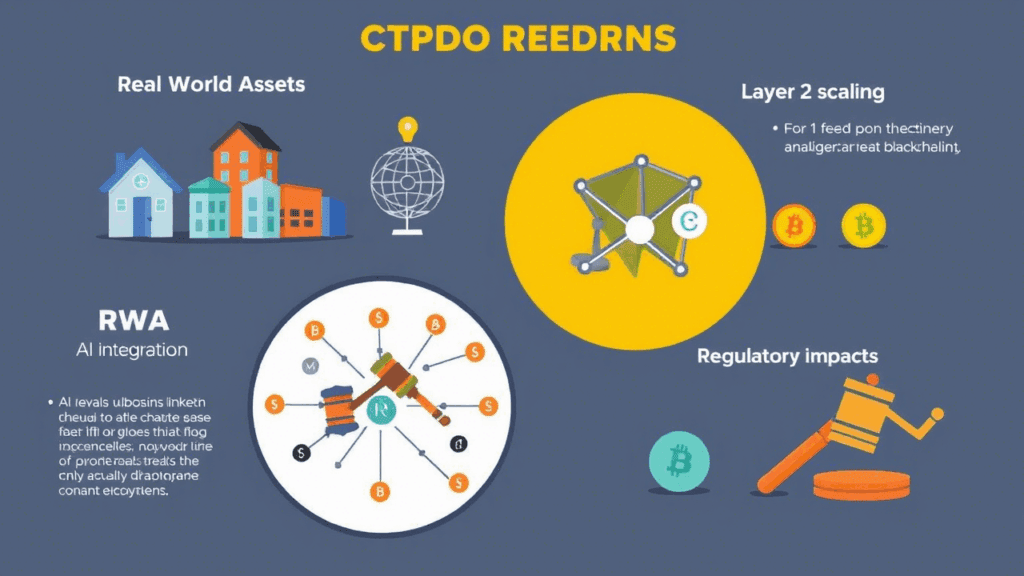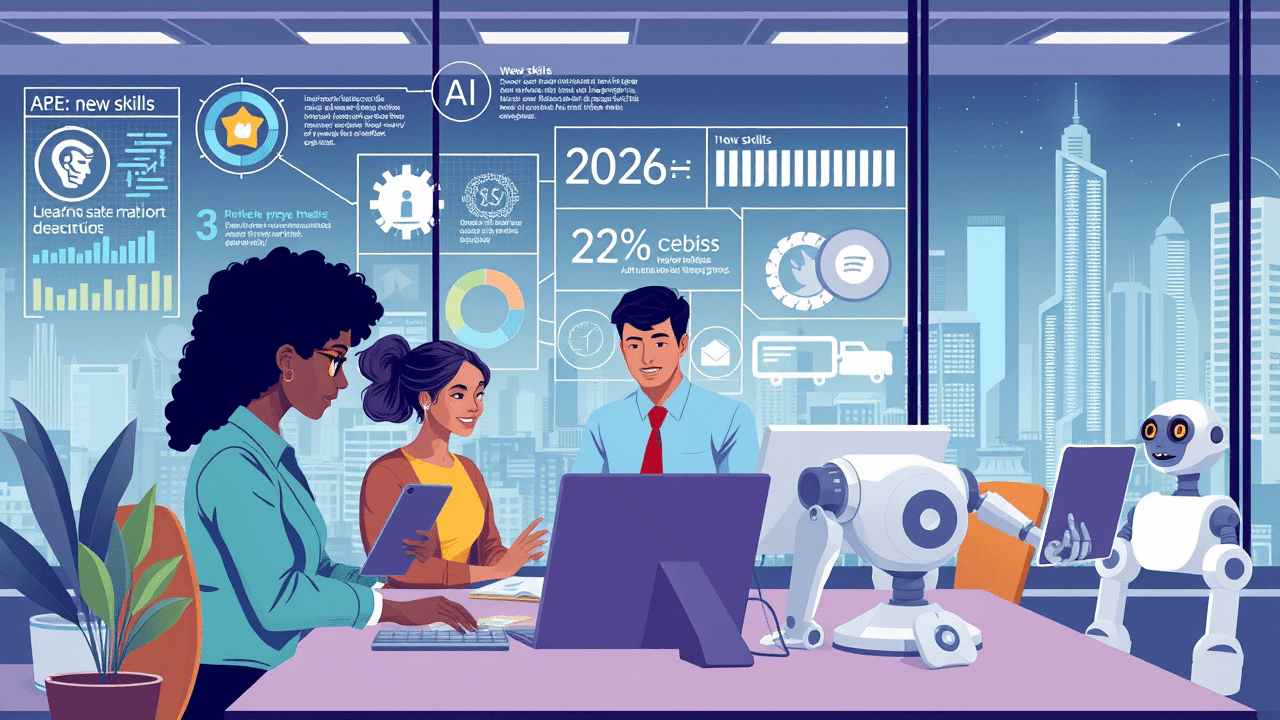Delve into the current crypto landscape with an analytical look at trending sectors like RWAs, AI convergence, Layer 2 scaling, and the evolving regulatory environment shaping digital assets.
Analyzing the Crypto Market: Hot Trends and Key Developments
The cryptocurrency market is a dynamic and rapidly evolving ecosystem, constantly shaped by technological advancements, macroeconomic shifts, regulatory actions, and changing investor sentiment. While price volatility often dominates headlines, a closer look reveals underlying trends and fundamental developments that are truly driving innovation and shaping the future of digital assets. As of late, several key narratives and sectors have captured significant attention, signaling potential shifts in how blockchain technology is utilized and integrated into the global financial and technological landscape. This analysis explores some of the most prominent hot topics currently influencing the crypto market.
Real World Assets (RWAs): Bridging Traditional Finance and Blockchain
One of the most compelling narratives gaining momentum is the tokenization of Real World Assets (RWAs). This involves representing tangible or intangible assets from the traditional financial system (TradFi) as digital tokens on a blockchain. Examples include real estate, fine art, commodities, private equity, and even credit and debt instruments.
What are RWAs in Crypto?
Tokenization converts ownership rights or economic value of an asset into a digital token. This token resides on a blockchain, inheriting properties like divisibility, transferability, and programmability. Unlike cryptocurrencies like Bitcoin or Ether, which are native to the digital realm, RWAs originate outside of it.
Drivers of Growth
Several factors are contributing to the RWA trend:
- Increased Efficiency: Tokenization can streamline cumbersome processes like title transfers, clearing, and settlement, reducing costs and time.
- Improved Liquidity: Fractional ownership enabled by tokens can make illiquid assets (like real estate) more accessible to a broader range of investors.
- Greater Transparency: Blockchain provides a transparent and immutable record of ownership and transaction history.
- Enhanced Accessibility: Lower investment minimums facilitated by fractionalization can democratize access to asset classes previously reserved for institutions or high-net-worth individuals.
- Institutional Interest: Major financial institutions are actively exploring or implementing RWA tokenization for assets like bonds and funds, viewing it as a path to modernize infrastructure.
Potential Impact
The tokenization of RWAs has the potential to unlock trillions of dollars in value by bringing illiquid assets onto blockchain rails. It could profoundly impact capital markets, lending protocols (using tokenized assets as collateral), and the overall integration of decentralized finance (DeFi) with TradFi. Challenges remain, particularly regarding legal frameworks, regulatory compliance, and technical standardization, but the trajectory suggests significant future growth.
The AI and Crypto Convergence
Another prominent theme is the increasing convergence between Artificial Intelligence (AI) and blockchain technology. While distinct fields, their intersection is creating new possibilities and investment narratives.
AI for Crypto Trading and Analysis
AI is being applied to analyze vast amounts of market data, identify trading patterns, optimize portfolio management, and even predict market movements. AI-driven trading bots and analytical platforms are becoming more sophisticated, offering retail and institutional investors advanced tools.
Blockchain for AI Data & Governance
Conversely, blockchain can enhance AI systems by providing decentralized, transparent, and immutable infrastructure. Use cases include:
- Decentralized Data Marketplaces: Enabling secure sharing and monetization of AI training data.
- Verifiable AI Outputs: Using blockchain to timestamp and verify the origin and integrity of AI-generated data or decisions.
- Decentralized AI Computing: Leveraging distributed networks for AI model training and inference.
- AI Governance: Utilizing decentralized autonomous organizations (DAOs) to govern AI projects and protocols.
Investment Narratives
The intersection has fueled speculative interest in projects explicitly combining AI and crypto, ranging from decentralized AI computing networks to protocols focused on AI-driven trading or data verification. Analysts are examining which projects offer substantive integration versus superficial association.
Evolution of Layer 2 Scaling Solutions
Scalability has long been a major hurdle for public blockchains, particularly for platforms like Ethereum, limiting transaction speed and increasing costs during peak usage. Layer 2 (L2) scaling solutions built on top of Layer 1 blockchains continue to be a critical area of development and adoption.
The Need for Scaling
High transaction fees (gas fees) and slow confirmation times on congested L1 networks hinder mainstream adoption for applications requiring frequent, low-cost interactions (like gaming, social media, or micro-payments).
Recent Developments
The L2 landscape is diversifying and maturing:
- Optimistic Rollups: Solutions like Arbitrum and Optimism have achieved significant adoption by processing transactions off-chain and posting batched data to L1, assuming transactions are valid unless challenged.
- ZK-Rollups: Zero-Knowledge Rollups (like zkSync, StarkNet, Polygon zkEVM) are gaining prominence. They use cryptographic proofs to instantly verify off-chain transactions on L1, offering potentially faster finality and higher security guarantees.
- Modular Blockchains: The concept of modularity, separating execution, data availability, settlement, and consensus layers, is influencing L2 design, promising greater flexibility and efficiency (e.g., Celestia, sovereign rollups).
- Shared Sequencers and Interoperability: Efforts are underway to improve interoperability between different L2s and create more robust sequencing mechanisms.
Implications for Users and Developers
Improved L2s translate to a better user experience through faster, cheaper transactions, enabling a wider range of dApps. For developers, they offer more flexible and powerful environments to build scalable applications.
Navigating the Regulatory Maze
Regulatory clarity (or lack thereof) remains a persistent and significant factor influencing the crypto market globally. Governments and regulatory bodies worldwide are grappling with how to classify, govern, and tax digital assets and related activities.
Global Approaches
Approaches vary widely:
- Some jurisdictions are establishing comprehensive frameworks (e.g., MiCA in the EU).
- Others are taking enforcement-first approaches, particularly regarding perceived unregistered securities.
- Focus areas often include consumer protection, anti-money laundering (AML), counter-terrorism financing (CFT), and financial stability.
Impact on Innovation and Adoption
Uncertainty can stifle innovation and deter institutional participation due to compliance risks. Conversely, clear and thoughtful regulation can provide a stable environment, attracting investment and fostering mainstream adoption. Key regulatory developments, such as approvals for Bitcoin ETFs in major markets, are closely watched as indicators of regulatory attitudes and potential catalysts for wider acceptance.
Institutional Interest on the Rise
Despite regulatory headwinds in some regions, institutional interest in crypto continues to grow. This is a critical trend because institutional capital and participation can provide greater market depth, stability, and legitimacy.
ETFs and Investment Products
The launch of spot Bitcoin ETFs in the United States marked a significant milestone, providing traditional investors with regulated, easily accessible avenues to gain exposure to Bitcoin without directly holding the asset. Similar products for other cryptocurrencies or in other jurisdictions are anticipated.
Corporate Adoption
Beyond investment vehicles, corporations are exploring blockchain for various use cases, including supply chain management, payments, and loyalty programs. Major tech companies and financial firms are investing in blockchain infrastructure and talent.
The current crypto market narrative is less about speculative peaks and troughs and more about the fundamental integration of blockchain technology into existing financial and technological systems. RWAs, AI, and L2s represent tangible progress towards real-world utility and scalability, while regulatory clarity remains the crucial external factor influencing the pace of adoption.
Conclusion: What’s Next?
The hot topics discussed – RWAs, AI convergence, L2 scaling, and regulatory evolution – are not isolated trends but interconnected forces shaping the next phase of the crypto and blockchain industry. The focus is shifting from pure speculation to utility, scalability, and integration with the broader economy. As institutions become more involved and technology matures, these narratives are likely to drive significant development and investment in the coming months and years. Staying informed about these core developments is crucial for anyone navigating the complex yet promising landscape of digital assets.





